编程之美-第3章 结构之法
3.1. 字符串移位包含问题
方法1:
分别对字符串进行循环移1位,2位,3位…,来判断给定的字符串是否是其中一个字串.
复杂度是O(n^3)
方法2:
这也是一种利用空间换时间的方法.
代码如下, 为了简便实现,采用了C库中的字符串操作函数:
#if 0 /* * 3.1 */ bool isRotate(char *s1,char* s2){ int len1=strlen(s1), len2=strlen(s2); char *ss=new char[2*len1+1]; strncpy(ss,s1,len1); strncat(ss,s2,len1); char *p=strstr(ss,s2); bool flag; if(p==0) flag=false; else flag=true; delete[] ss; return true; } int main(){ char *s1="ABCD"; char *s2="CDAB"; if(isRotate(s1,s2)) printf("OK"); else printf("NO"); } #endif
也可以采用KMP算法进行加快查找: http://blog.csdn.net/linyunzju/article/details/7745553
3.2 电话号码对应英语单词问题
这个问题可以直观的用下面的图来表示
这样对于一个号码所对应的单词, 可以使用对树进行搜索的方式进行.
这种情况下采用的是DFS的方式.
下面的代码中采用了两种方式, 递归和非递归的方式. 其实这就是一个组合问题, 需要遍历所有情况. 对于非递归的情况, 其实有些类似非递归的排列组合的方式.
#if 0 char *c[10]{"","","ABC","DEF","GHI","JKL","MNO", "PQRS","TUV","WXYZ" }; int total[10]={0,0,3,3,3,3,3, 4,3,4}; void transform(char *number){ int sz=strlen(number); int *answer=new int[sz](); while(1){ for(int i=0;i<sz;i++) printf("%c",c[number[i]-'0'][answer[i]]); printf("\n"); int k=sz-1; while(k>=0){ if(answer[k]<total[number[k]-'0']-1){ answer[k]++; break; } else{ answer[k]=0;k--; } } if(k<0) break; } delete[] answer; } void dfs(char *number,int *answer,int k,int sz){ if(k==sz){ for(int i=0;i<sz;i++) printf("%c",c[number[i]-'0'][answer[i]]); printf("\n"); } else{ for(answer[k]=0;answer[k]<total[number[k]-'0'];answer[k]++) dfs(number,answer,k+1,sz); } } void transform2(char *number){ int sz=strlen(number); int *answer=new int[sz](); dfs(number,answer,0,sz); delete[] answer; } int main(){ char *number="2345"; transform(number); transform2(number); } #endif
对于问题二,可以采用下面的解法:
3.3 计算字符串相似度问题(编辑距离问题)
这个问题就是编辑距离的问题.
可以有两种解决方式: 递归的方式和动态规划的方式.
方法1: 递归的方式
这样就得到了下面的递归程序:
#if 0 /* * 3.3 */ int calc_edit_dist(char *s1,char *s2){ if(*s1=='\0'||s1==0) return strlen(s2); if(*s2=='\0'||s2==0) return strlen(s1); if(*s1==*s2){ return calc_edit_dist(s1+1,s2+1); } else{ int ed1=calc_edit_dist(s1,s2+1); int ed2=calc_edit_dist(s1+1,s2); int ed3=calc_edit_dist(s1+1,s2+1); if(ed1<ed2) return (ed1<ed3?ed1:ed3)+1; else return (ed2<ed3?ed2:ed3)+1; } } int main(){ char *s1="ab"; char *s2="bb"; printf("%d\n",calc_edit_dist(s1,s2)); } #endif
但是递归程序计算比较慢, 因为中间存在很多的重复计算.
方法2: 动态规划
这个问题其实可以归结为寻找两个序列的最长公共子序列问题.
参考: http://blog.csdn.net/linyunzju/article/details/7747718
3.5 最短摘要生成问题
给定一段产品的英文描述,包含M个英文字母,每个英文单词以空格分隔,无其他标点符号;再给定N个英文单词关键字,请说明思路并编程实现方法String extractSummary(String description,String[] key words),目标是找出此产品描述中包含N个关键字(每个关键词至少出现一次)的长度最短的子串,作为产品简介输出。(不限编程语言)20分。
#if 0 bool allExisted(const map<string,int>& mp){ map<string,int>::const_iterator ite; for(ite=mp.begin();ite!=mp.end();++ite) if(ite->second==0) return false; return true; } void reset(map<string,int>& mp){ map<string,int>::iterator ite; for(ite=mp.begin();ite!=mp.end();++ite) ite->second=0; } int find_min_len_digest(const vector<string>& vec,const vector<string>& keywords){ map<string,int> mp; int len=1000000; vector<string>::const_iterator ite,pbeg,pend; for(ite=keywords.begin();ite!=keywords.end();++ite) mp[*ite]=0; pbeg=vec.begin(); while(pbeg!=vec.end()){ while(pbeg!=vec.end()&&mp.find(*pbeg)==mp.end()) ++pbeg; if(pbeg==vec.end()) break; mp[*pbeg]++; pend=pbeg+1; while(pend!=vec.end()&&!allExisted(mp)){ if(mp.find(*pend)==mp.end()) { ++pend; } else{ mp[*pend]++; ++pend; } } if(allExisted(mp)){ if(pend!=vec.end()) { if(len>pend-pbeg){ len=pend-pbeg; } for(ite=pbeg;ite!=pend;++ite) cout<<*ite<<' '; cout<<'\n'; } else{ if(len>vec.size()-(pbeg-vec.begin())) len=vec.size()-(pbeg-vec.begin()); for(ite=pbeg;ite!=vec.end();++ite) cout<<*ite<<' '; cout<<'\n'; break; } reset(mp); } pbeg=pend; } return len; } int main(){ // string str[]={"i","am","a","big","boy",".","i","is","i","boy"}; // string key[]={"i","boy"}; string key[] = { "微软", "计算机", "亚洲"}; string str[] = { "微软","亚洲","研究院","成立","于","1998","年",",","我们","的","使命", "是","使","未来","的","计算机","能够","看","、","听","、","学",",", "能","用","自然语言","与","人类","进行","交流","。","在","此","基础","上", ",","微软","亚洲","研究院","还","将","促进","计算机","在","亚太","地区", "的","普及",",","改善","亚太","用户","的","计算","体验","。","”" }; vector<string> keywords(key,key+sizeof(key)/sizeof(string)); vector<string> vec(str,str+sizeof(str)/sizeof(string)); // copy(vec.begin(),vec.end(),ostream_iterator<string>(cout," ")); // cout<<endl; find_min_len_digest(vec,keywords); } #endif
3.6 判断两个链表是否相交
参考: http://blog.csdn.net/linyunzju/article/details/7753548
3.7 队列中取最大值操作问题
参考: http://blog.csdn.net/linyunzju/article/details/7765324
解法三:
利用两个STL中的stack适配器来实现带有最大值操作的栈类, 然后利用两个新实现的栈来实现带有最大值操作的队列.
#if 0 class Stack{ public: void push(int x){ sta.push(x); if(stb.empty()) { stb.push(x); } else{ int t=stb.top(); stb.push(t>x?t:x); } } void pop(){ if(!sta.empty()){ sta.pop(); stb.pop(); } } int top(){ assert(sta.empty()==false); return sta.top(); } int maxV(){ assert(sta.empty()==false); return stb.top(); } int size(){ return sta.size(); } bool empty(){ return sta.empty(); } private: stack<int> sta; stack<int> stb; }; class Queue{ public: void push(int x){ sta.push(x); } void pop(){ if(stb.empty()) { while(!sta.empty()) { int t=sta.top(); sta.pop(); stb.push(t); } } stb.pop(); } int front(){ if(stb.empty()) { while(!sta.empty()) { int t=sta.top(); sta.pop(); stb.push(t); } } return stb.top(); } int maxV(){ if(stb.empty()){ return sta.maxV(); } if(sta.empty()){ return stb.maxV(); } return max(sta.maxV(),stb.maxV()); } private: Stack sta; Stack stb; }; int main(){ Queue q; int a[] = {2, 3, 4, 9, 4, 5, 10, 6}; for(int i = 0; i < sizeof(a)/sizeof(int); ++i) { q.push(a[i]); } q.push(101); cout<<q.front()<<endl; cout<<"queue maxvalue = "<<q.maxV()<<endl; q.push(590); cout<<"queue maxvalue = "<<q.maxV()<<endl; int deq = q.front(); cout<<"deq = "<<deq<<endl; cout<<"queue maxvalue = "<<q.maxV()<<endl; q.pop(); cout<<"queue maxvalue = "<<q.maxV()<<endl; } #endif
3.8 求二叉树中节点的最大距离
计算一个二叉树的最大距离有两个情况:
情况A: 路径经过左子树的最深节点,通过根节点,再到右子树的最深节点。
情况B: 路径不穿过根节点,而是左子树或右子树的最大距离路径,取其大者。
只需要计算这两个情况的路径距离,并取其大者,就是该二叉树的最大距离。
//思路:注意指针声明了一定要赋值,否则会报错。
// 方法一:递归法
//距离相差最远的两个结点,共有以下两种情况:
// (1)路径经过根结点,所以两个结点在根结点的不同分支上
// (2)路径不经过根结点,所以两个结点应该是次根结点中相聚最远的两个结点。(递归思想)
// 递归本质上还是采用了后续遍历的方法。由于是从叶子结点开始的所以每次处理都是第一种情况。
// 方法二:非递归法
//采用后序遍历二叉树的同时对二叉树的结点进行更新,每次更新都要更新最大距离。
struct Node{ char data; Node* left; Node* right; int nMaxLeft; int nMaxRight; }; int maxLen=0; void findMaxLength(Node* root){ if(root==0) return ; if(root->left==0) root->nMaxLeft=0; if(root->right==0) root->nMaxRight=0; if(root->left!=0) findMaxLength(root->left); if(root->right!=0) findMaxLength(root->right); if(root->left!=0) { root->nMaxLeft=(root->left->nMaxLeft>root->left->nMaxRight? root->left->nMaxLeft:root->left->nMaxRight)+1; } if(root->right!=0){ root->nMaxRight=(root->right->nMaxLeft>root->right->nMaxRight? root->right->nMaxLeft:root->right->nMaxRight)+1; } if(root->nMaxLeft+root->nMaxRight>maxLen) maxLen=root->nMaxLeft+root->nMaxRight; } void findMaxLength2(Node* root){ stack<Node*> st; Node *p=root,*visited=0; while(p!=0||!st.empty()){ while(p!=0){ st.push(p); p=p->left; } p=st.top(); if(p->right==0||visited==p->right){ if(p->left!=0) { p->nMaxLeft=(p->left->nMaxLeft>p->left->nMaxRight? p->left->nMaxLeft:p->left->nMaxRight)+1; } if(p->right!=0){ p->nMaxRight=(p->right->nMaxLeft>p->right->nMaxRight? p->right->nMaxLeft:p->right->nMaxRight)+1; } if(p->nMaxLeft+p->nMaxRight>maxLen) maxLen=p->nMaxLeft+p->nMaxRight; st.pop(); visited=p; p=0; } else p=p->right; } }
这段代码有几个缺点:
算法加入了侵入式(intrusive)的资料nMaxLeft, nMaxRight
使用了全局变量 nMaxLen。每次使用要额外初始化。而且就算是不同的独立资料,也不能在多个线程使用这个函数
逻辑比较复杂,也有许多 NULL 相关的条件测试。
一种不改变树本身结构的方法:
我认为这个问题的核心是,情况A 及 B 需要不同的信息: A 需要子树的最大深度,B 需要子树的最大距离。只要函数能在一个节点同时计算及传回这两个信息,代码就可以很简单:
struct RESULT{ int nMaxDistance; int nMaxDepth; }; RESULT findMaxLength3(Node* root){ if(root==0){ RESULT empty={0,-1}; return empty; } RESULT lhs=findMaxLength3(root->left); RESULT rhs=findMaxLength3(root->right); RESULT res; res.nMaxDepth=max(lhs.nMaxDepth,rhs.nMaxDepth)+1; res.nMaxDistance=max(max(lhs.nMaxDistance,rhs.nMaxDistance),lhs.nMaxDepth+rhs.nMaxDepth+2); return res; } void postorder(Node* root){ stack<Node*> st; Node* p=root,*visited=0; while(p!=0||!st.empty()){ while(p!=0){ st.push(p); p=p->left; } p=st.top(); if(p->right==0||visited==p->right){ cout<<(int)p->data<<' '; st.pop(); visited=p; p=0; } else{ p=p->right; } } cout<<endl; }
计算 result 的代码很清楚;nMaxDepth 就是左子树和右子树的深度加1;nMaxDistance 则取 A 和 B 情况的最大值。
为了减少 NULL 的条件测试,进入函数时,如果节点为 NULL,会传回一个 empty 变量。比较奇怪的是 empty.nMaxDepth = -1,目的是让调用方 +1 后,把当前的不存在的 (NULL) 子树当成最大深度为 0。
除了提高了可读性,这个解法的另一个优点是减少了 O(节点数目) 大小的侵入式资料,而改为使用 O(树的最大深度) 大小的栈空间。这个设计使函数完全没有副作用(side effect)。
测试代码如下:
Node* initTree() { Node* tree[10]; for(int i=0;i<10;i++) { tree[i]=(Node*)malloc(sizeof(Node)); tree[i]->nMaxLeft=0; tree[i]->nMaxRight=0; tree[i]->left=NULL; tree[i]->right=NULL; tree[i]->data=(char)i; } for(int i=0;i<=2;i++) { tree[i]->left=tree[2*i+1]; tree[i]->right=tree[2*i+2]; } tree[3]->left=tree[7]; tree[5]->right=tree[8]; return tree[0]; } int main(){ findMaxLength(initTree()); printf("递归法:%d\n",maxLen); maxLen=0; findMaxLength2(initTree()); printf("非递归:%d\n",maxLen); maxLen=0; RESULT r=findMaxLength3(initTree()); printf("new Method:%d\n",r.nMaxDistance); }
参考: http://blog.csdn.net/zuiaituantuan/article/details/6210317
http://www.cnblogs.com/miloyip/archive/2010/02/25/1673114.html
3.9 重建二叉树
主要是给出前序和中序或中序和后序来构造出二叉树.
这种题一般有二种形式,共同点是都已知中序序列。如果没有中序序列,是无法唯一确定一棵树的,证明略。
一、已知二叉树的前序序列和中序序列,求解树。
1、确定树的根节点。树根是当前树中所有元素在前序遍历中最先出现的元素。
2、求解树的子树。找出根节点在中序遍历中的位置,根左边的所有元素就是左子树,根右边的所有元素就是右子树。若根节点左边或右边为空,则该方向子树为空;若根节点左边和右边都为空,则根节点已经为叶子节点。
3、递归求解树。将左子树和右子树分别看成一棵二叉树,重复1、2、3步,直到所有的节点完成定位。
二、已知二叉树的后序序列和中序序列,求解树。
1、确定树的根。树根是当前树中所有元素在后序遍历中最后出现的元素。
2、求解树的子树。找出根节点在中序遍历中的位置,根左边的所有元素就是左子树,根右边的所有元素就是右子树。若根节点左边或右边为空,则该方向子树为空;若根节点左边和右边都为空,则根节点已经为叶子节点。
3、递归求解树。将左子树和右子树分别看成一棵二叉树,重复1、2、3步,直到所有的节点完成定位。
举例说明:根据已知求解二叉树
中序序列 HLDBEKAFCG
后序序列 LHDKEBFGCA
1、在后序序列LHDKEBFGCA中最后出现的元素为A,HLDBEK|A|FCG
2、在后序序列LHDKEB中最后出现的元素为B,HLD|B|EK|A|FCG
3、在后序序列LHD中最后出现的元素为D,HL|D|B|EK|A|FCG
4、在后序序列LH中最后出现的元素为H,H|L|D|B|EK|A|FCG
5、在后序序列KE中最后出现的元素为E,H|L|D|B|E|K|A|FCG
5、在后序序列FGC中最后出现的元素为C,H|L|D|B|E|K|A|F|C|G
6、所有元素都已经定位,二叉树求解完成。
A
/ \
B C
/ \ / \
D E F G
/ \
H K
\
L
下面的代码中也包括了根据两个遍历结果输出另一个结果.
#if 0 //查找根节点的位置 char* find_root(char *start,char *end,char c){ while(start<=end){ if(*start==c) return start; start++; } return NULL; } //根据前序和中序来输出后序:核心函数 void pre_in_post_(char *pre_start,char*pre_end,char* in_start,char *in_end){ if(in_start>in_end) return; if(in_start==in_end) { printf("%c",*in_start); return ; } char c=*pre_start++; char *p=find_root(in_start,in_end,c); if(p!=NULL){ int len=p-in_start; pre_in_post_(pre_start,pre_start+len-1,in_start,p-1); pre_in_post_(pre_start+len,pre_end,p+1,in_end); } printf("%c",c); } //调用上面的递归函数 void pre_in_post(char*pre,char *in){ int len1=strlen(pre); int len2=strlen(in); char *pre_end=pre+len1-1; char *in_end=in+len2-1; pre_in_post_(pre,pre_end,in,in_end); } //根据后序和中序来输出前序 void post_in_pre_(char *post_start,char*post_end,char* in_start,char *in_end){ if(in_start>in_end) return; if(in_start==in_end) { printf("%c",*in_start); return ; } char c=*post_end--; char *p=find_root(in_start,in_end,c); printf("%c",c); if(p!=NULL){ int len=p-in_start; post_in_pre_(post_start,post_start+len-1,in_start,p-1); post_in_pre_(post_start+len,post_end,p+1,in_end); } } //调用上面的递归函数 void post_in_pre(char*post,char *in){ int len1=strlen(post); int len2=strlen(in); char *post_end=post+len1-1; char *in_end=in+len2-1; post_in_pre_(post,post_end,in,in_end); } //二叉树节点定义 struct Node{ char data; Node* left; Node* right; Node(){}; Node(char c,Node* l=0,Node* r=0):data(c),left(l),right(r){} }; //根据前序和中序来重建二叉树 Node* rebuild_pre_in_post_(char *pre_start,char*pre_end,char* in_start,char *in_end){ if(in_start>in_end) return 0; if(in_start==in_end) return new Node(*in_start); char c=*pre_start++; char *p=find_root(in_start,in_end,c); Node* r=new Node(c); if(p!=NULL){ int len=p-in_start; r->left=rebuild_pre_in_post_(pre_start,pre_start+len-1,in_start,p-1); r->right=rebuild_pre_in_post_(pre_start+len,pre_end,p+1,in_end); } return r; } // Node* rebuild_pre_in_post(char*pre,char *in){ int len1=strlen(pre); int len2=strlen(in); char *pre_end=pre+len1-1; char *in_end=in+len2-1; Node* root=rebuild_pre_in_post_(pre,pre_end,in,in_end); return root; } //根据后序和中序来重建二叉树 Node* rebuild_post_in_pre_(char *post_start,char*post_end,char* in_start,char *in_end){ if(in_start>in_end) return 0; if(in_start==in_end) return new Node(*in_start); char c=*post_end--; char *p=find_root(in_start,in_end,c); Node* r=new Node(c); if(p!=NULL){ int len=p-in_start; r->left=rebuild_post_in_pre_(post_start,post_start+len-1,in_start,p-1); r->right=rebuild_post_in_pre_(post_start+len,post_end,p+1,in_end); } return r; } // Node* rebuild_post_in_pre(char*post,char *in){ int len1=strlen(post); int len2=strlen(in); char *post_end=post+len1-1; char *in_end=in+len2-1; Node* root=rebuild_post_in_pre_(post,post_end,in,in_end); return root; } //前序遍历函数 void PreOrder(Node* root){ if(root!=0) { printf("%c ",root->data); PreOrder(root->left); PreOrder(root->right); } } //后序变量函数 void PostOrder(Node* root){ if(root!=0) { PostOrder(root->left); PostOrder(root->right); printf("%c ",root->data); } } int main(){ char *pre="ACBGEDF"; char *in="GBCEADF"; char *post="GBECFDA"; pre_in_post(pre,in); printf("\n"); post_in_pre(post,in); printf("\n"); PreOrder(rebuild_pre_in_post(pre,in)); printf("\n"); PostOrder(rebuild_post_in_pre(post,in)); } #endif
参考: http://www.cnblogs.com/bmrs/archive/2010/08/19/SloveTree.html




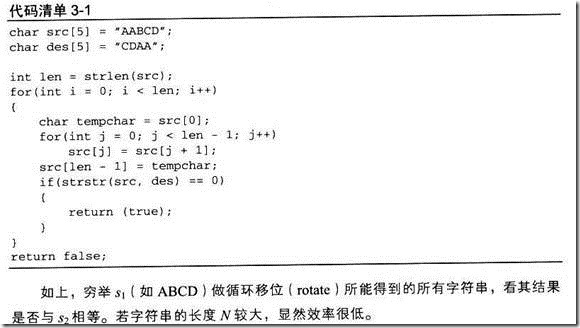
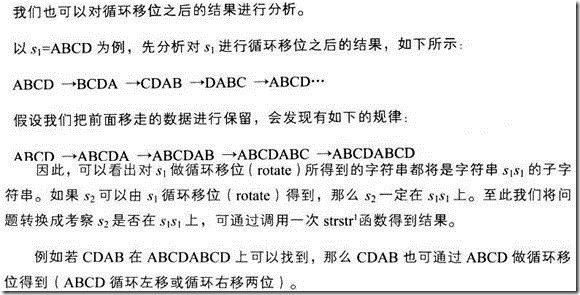
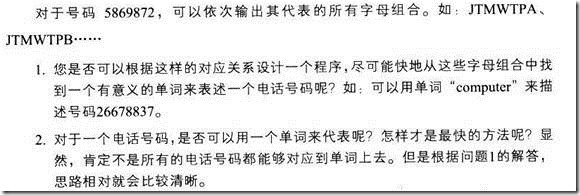
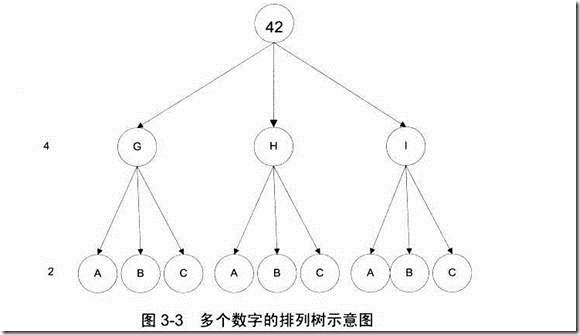

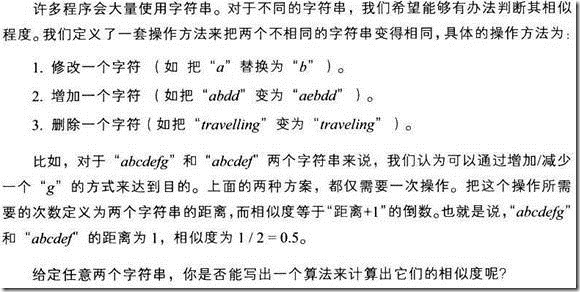
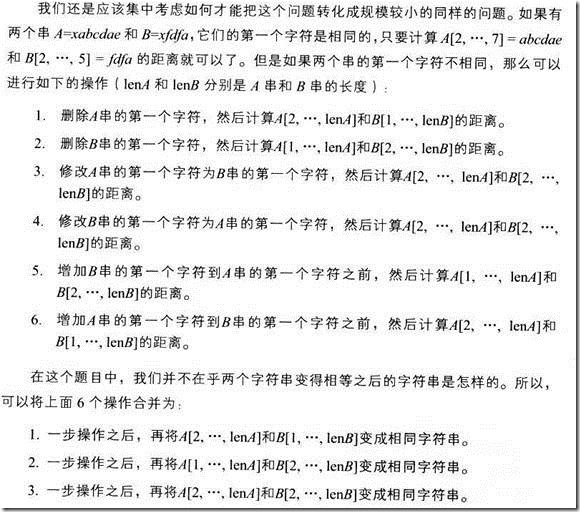
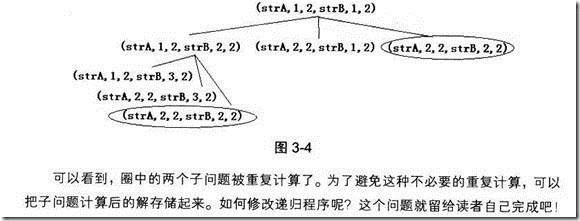

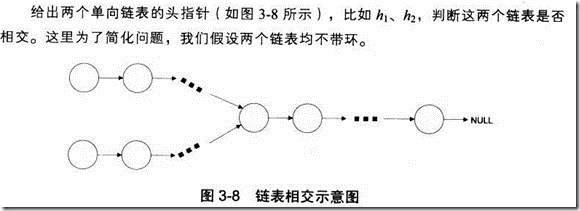

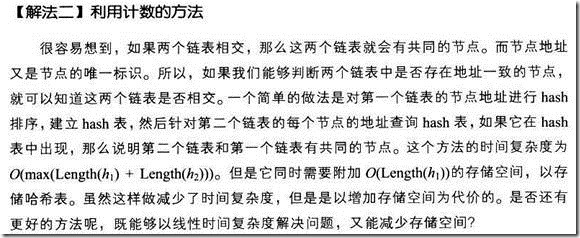
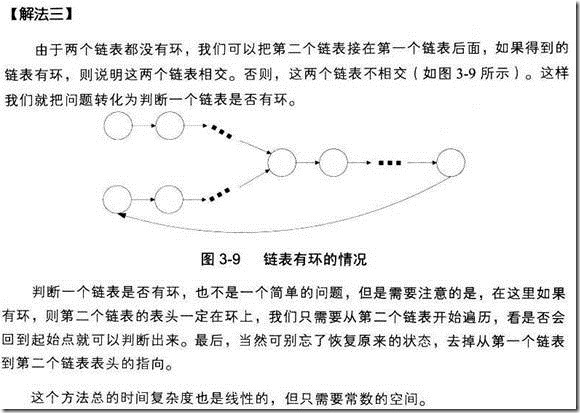



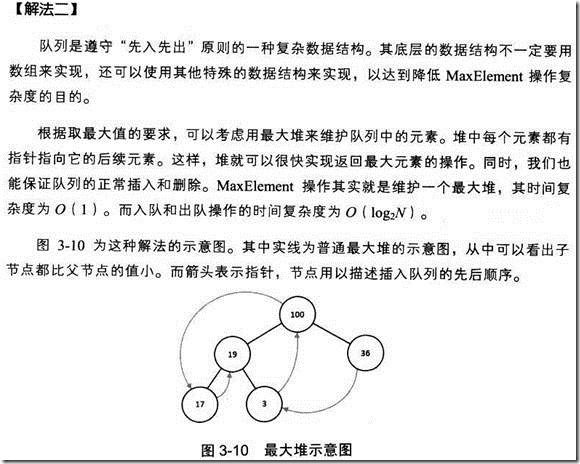
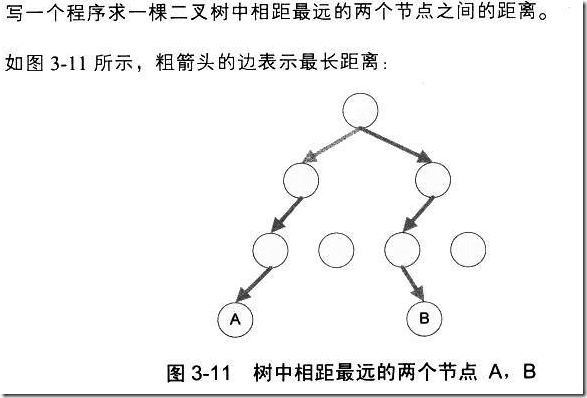
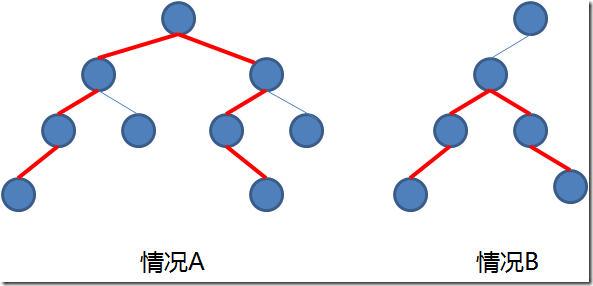

 浙公网安备 33010602011771号
浙公网安备 33010602011771号